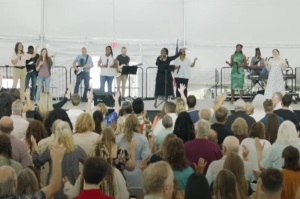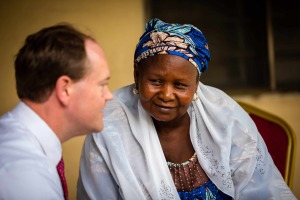Archaeological discovery: Mosaic evidence of Early Christianity at 'Burnt Church' near Galilee

Correction appended
Researchers have recently uncovered four new inscriptions near Galilee that showcase evidence of early Christianity at a site commonly known as the "Burnt Church."
The four inscriptions were discovered while archaeologists were cleaning Byzantine mosaics at the Martyrion of Theodoros church, located at Hippos near the Sea of Galilee, reported All Israel News late last month.
The church is also known as the "Burnt Church" because it was burned down by Persian invaders in the early seventh century.
One Greek inscription found read: “Offering in favor of salvation and succor for Urania and Theodoros. Lord God, accept! Amen! In the time of indiction 4 and year 619.”
Professor Gregor Staab of the Institute of Classical Studies at the University of Cologne in Germany said that Urania and Theodoros likely created a private chapel as a final resting place for themselves at the site.
Staab went on to explain that the structure of the inscriptions implied that the Greek language had become distorted by local languages, noting that the "language of the mosaic inscriptions shows a remarkably strong decline both in the phonetic rendering and in the grammatical rules."
"[I]t was unthinkable to come up with the idea of using a language other than Greek — even if one was aware that this language was no longer mastered to the extent actually required," he continued, as reported by All Israel News.
"The original language of Christian liturgy and prayer to God was Greek, so it had to be considered impossible to deviate from using it in the Christian context."
The researchers also believed that the worship space would have segregated men and women, and also would have kept those who had not yet been baptized from the congregation, as well.
The Martyrion of Theodoros church was originally constructed sometime in the late fifth or early sixth centuries, and built in the Byzantine style, with carpets and mosaics with Christian symbolism.
The church is one of seven that has been discovered in the area, according to Haaretz, with other inscriptions being found by the excavation team back in 2019.
The space was known for its impressive view of the Sea of Galilee, where Jesus performed many of His miracles and oversaw his earthly ministry, as recorded in the Gospels.
Correction: Dec. 7, 2022:
A previous version of this article incorrectly stated that the Persians invading the area in the seventh century were Islamic. At the time, Persia was officially Zoroastrian and would not adopt Islam until later in the seventh century.
Email: michael.gryboski@christianpost.com Follow Michael Gryboski on Facebook: michael.gryboski Follow Michael Gryboski on Twitter: MichaelGryboskiCP





























